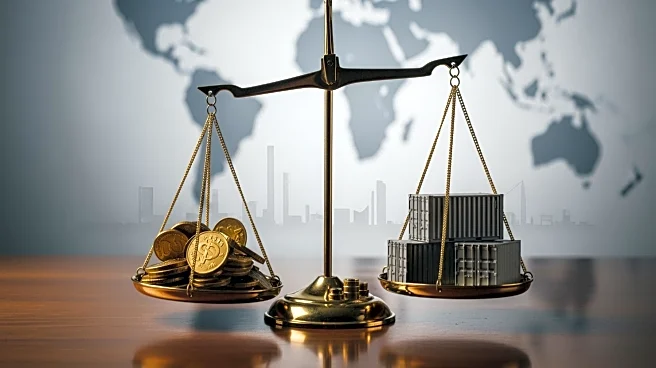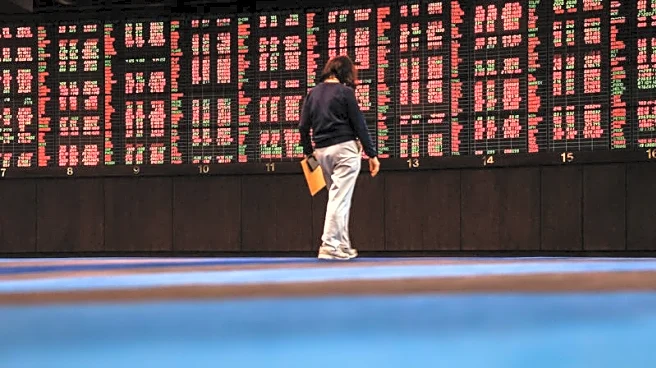What's Happening?
India's trade deficit reached a record high of $41.7 billion in October, driven by a significant increase in gold imports due to festive season demand. This surge in imports coincides with a decline in exports to the U.S., which have been affected by the imposition
of 50% tariffs by the U.S. since the end of August. India's exports to the U.S. fell by 8.5% year-on-year in October, amounting to $6.3 billion. Despite this decline, the U.S. remains India's largest export destination, with shipments totaling $52 billion in the first seven months of the fiscal year. Trade negotiations between the U.S. and India have been ongoing, with both sides showing signs of softening their stance. President Trump has hinted at the possibility of reducing tariffs on India, while India has increased its purchases of oil and gas from the U.S. to address the trade surplus.
Why It's Important?
The imposition of tariffs by the U.S. has significant implications for India's trade dynamics and economic health. The tariffs have contributed to a widening trade deficit, which could impact India's current account deficit, projected to reach 2.4-2.5% of GDP in the third quarter of the fiscal year ending March 2026. The ongoing trade negotiations are crucial for both countries, as they seek to balance trade relations and address economic disparities. For India, reducing the trade deficit is vital to maintaining economic stability, while for the U.S., easing tariffs could foster better diplomatic relations and economic cooperation. The situation underscores the interconnectedness of global trade and the impact of policy decisions on international economic relations.
What's Next?
As trade negotiations continue, both the U.S. and India are expected to explore avenues for reducing tariffs and enhancing trade relations. India is likely to continue increasing its imports of U.S. oil, gas, and farm products to mitigate the trade surplus. The potential reduction of tariffs by the U.S. could lead to a revival in India's exports, particularly in sectors like gems, jewelry, and engineering goods. Monitoring the trade talks and any policy changes will be crucial for stakeholders in both countries, as these developments could influence economic strategies and bilateral relations.














